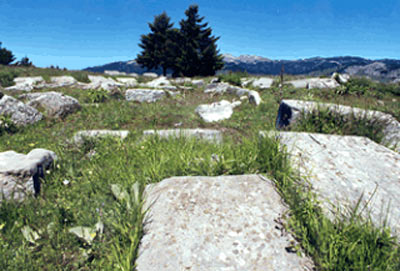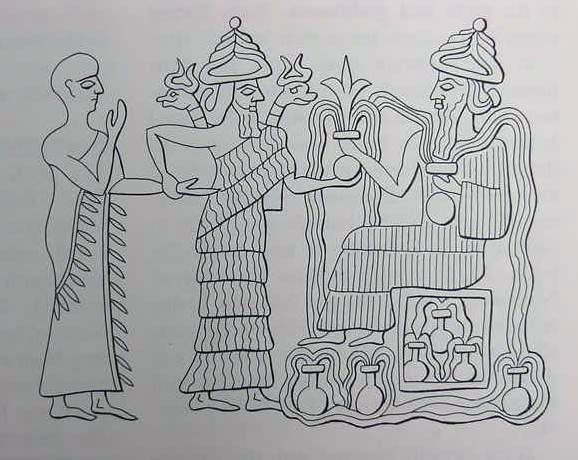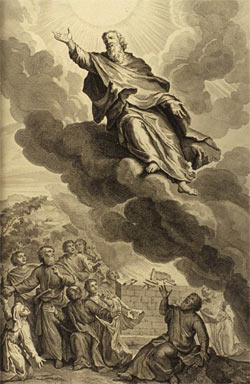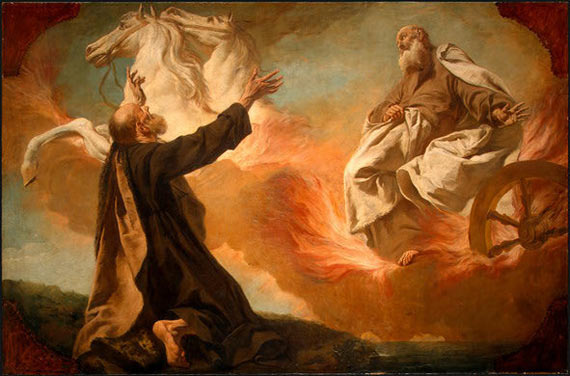The ascensions were very real, and they were marvelously impressive, judging by all the accounts. Most report begin transported to a “high mountain.” Others are compelled to “climb up” a brilliantly illuminated ladder, set of steps or a “strait and narrow” path. Each passes through several levels or spheres as he ascends. Some encounter sentinels at the gates to each level or at the very topmost level, and each of these sentries requires the proper password or response from the visionary in order to pass. Once at the top, they see what they report as heaven, paradise or the celestial kingdom. Some converse with God; others do not.
By design, the temple experience, whether ancient or modern, replicates the actual visionary ascension experience. Thus, the temple was and is a virtual reality, a replica of the real thing. Anciently, initiates were ushered through a series of locations within the temple where they experienced various rites and rituals, each meant to duplicate part of the ascension experience.
While earthly temples, ancient or modern, can never duplicate the magnificence of the actual visions they are meant to imitate, every effort was made to give the temple architecturally impressive, if not overwhelming, splendor and majesty. The very best of everything that a culture could muster went into that sacred edifice, whether it was a Greek temple, an Egyptian pyramid/temple, a Native American kiva, a Babylonian ziggurat, a Celtic henge, an Israelite temple, a Mayan pyramid/temple or the Nauvoo and Salt Lake temples. They were the highest examples of what any culture could muster in terms of luxury and architectural grandeur.
Most temples were festooned with icons that represented some part of the visionary archetype, things we take to be mere decorations: stars, moons, suns, pillars, mythic or real beasts and a most sacred enclosure or holy of holies partitioned by a curtain, veil or doorway.
Most Latter-day Saints who attend the temple are unaware of this intimate and ancient connection to our modern temples, but it is very real and very telling. It puts the modern temple experience in good and venerable company, making it authentic and true to the originals in every way. This, in and of itself, is also a powerful witness to the claims of divine revelation by Joseph Smith.
Because temple rituals are re-enactments of the archetypal ascension vision, which I believe was given to all the prophets (it wouldn’t do to have several versions, would it?), when reading ancient accounts, it’s often hard to tell whether we’re reading about an actual ascension or just an earthly version, administered in a temple — something we would call an endowment.
Where you and I might differ is in our interpretation of what the prophets saw. It would probably be your position, as it is with most Saints, that the prophets were shown things truly celestial in nature, and therefore completely foreign to anything in Earth’s past or present. To that mindset I would respond by asking, why, then, does nearly every ancient culture share the same perspective, imagery and symbolism as we do in modern temple rites? In spite of being thoroughgoing pagans, did they all have prophets to enlighten them? How is it that our temple rituals have nearly everything in common with those of ancient, pagan cultures?
So where did all this common ascension/temple tradition come from? I would contend that all religions share the same pool of archetypes because the ancients, pagan or not, had a shared set of cosmological experiences – not visions or revelations but real life actualities that played out across earthly skies at the dawn of time. They were eyewitnesses to spectacular displays of light and sound that left and indelible impression on their cultural and religious traditions and practices. That’s why all ancient cultures display a multitude of astral symbols in their sacred precincts. It’s the same reason Joseph Smith and Brigham Young put astral symbols all over the outside of modern temples.
I would further contend that what the prophets saw in vision, as recorded in ascension texts, was a rehearsal of those ancient cosmological events presented to them in vision, which they subsequently related in the very symbolic terms preserved by their various cultures. As a result, the more any prophet’s culture preserved of these astral or cosmological archetypes and narratives, the more relevant imagery any one prophet’s ascension account could include.
Since such data has been completely expunged from our cultural record, we Latter-day Saints completely fail to grasp the express meaning of our temple rituals. Because our version of the traditional temple ascension is only a faint echo of the original, it’s hard for modern Saints to make the intended connection. And because our culture teaches us that the original cosmological events, the genesis of sacred imagery, never happened, we completely fail to see the meaning in such accounts and their cosmological origins.
Another vital conclusion we can draw from all this is: What we see illustrated on the exterior architecture of LDS temples is what the rituals within are all about as well. Most church members regard the symbols on the outside of the Salt Lake Temple, the quintessential exemplar of temple tradition in our time, to have nothing at all to do with what happens inside. And yet, nothing could be further from the truth. Both inside and out, it rehearses and recalls the ancient heavens. That bit of perspective comes only from a corrected view of the past.
And that leads us to a startling conclusion that most Saints have never imagined. The formula for what I call the Circle of Meaning and Comprehension looks like this:
Notice the progression in the Circle of Meaning and Comprehension. One can start anywhere in the series and move in either direction. But as the proper connections are made, moving from one concept to the next, one returns to the place where one started. By repeating this circular process, one’s grasp of the Restored Gospel grows and grows.
Additionally, this process provides a new, intellectually invigorating and spiritually augmenting perspective on life and the world we live in, a new point of view on everything around us. It truly and accurately tells us about “things as the are, as they were and as they are to come.”
Our temple rituals, in my opinion, are given to educate us and point the way to enlightenment. Perhaps more importantly, they are a type and a kind, meant to prepare us for the real thing, if we become worthy. We have the opportunity to have the same visions as the prophets. But, as long as we fail to comprehend the meaning and origins of what we see in our temples today, we may never be given that sacred privilege.
© Anthony E. Larson, 2009



 The event was said to have taken place on a hill over mount Oiti, just above the ancient city of
The event was said to have taken place on a hill over mount Oiti, just above the ancient city of 

 One of the most famous ascension stories in the Old Testament is the story of Enoch. Enoch was one of God’s favourite subjects. Patriarch Enoch was the great grand-father of Noah and the father of Methuselah. You will find him in the Book of Genesis where he is referred to as one of the ten Patriarchs before the great Deluge. According to the Old Testament, Pre-Deluge humans were said to live for a few hundred years. Enoch lived for 365 years, which was relatively short by the measure of that time.
One of the most famous ascension stories in the Old Testament is the story of Enoch. Enoch was one of God’s favourite subjects. Patriarch Enoch was the great grand-father of Noah and the father of Methuselah. You will find him in the Book of Genesis where he is referred to as one of the ten Patriarchs before the great Deluge. According to the Old Testament, Pre-Deluge humans were said to live for a few hundred years. Enoch lived for 365 years, which was relatively short by the measure of that time.
